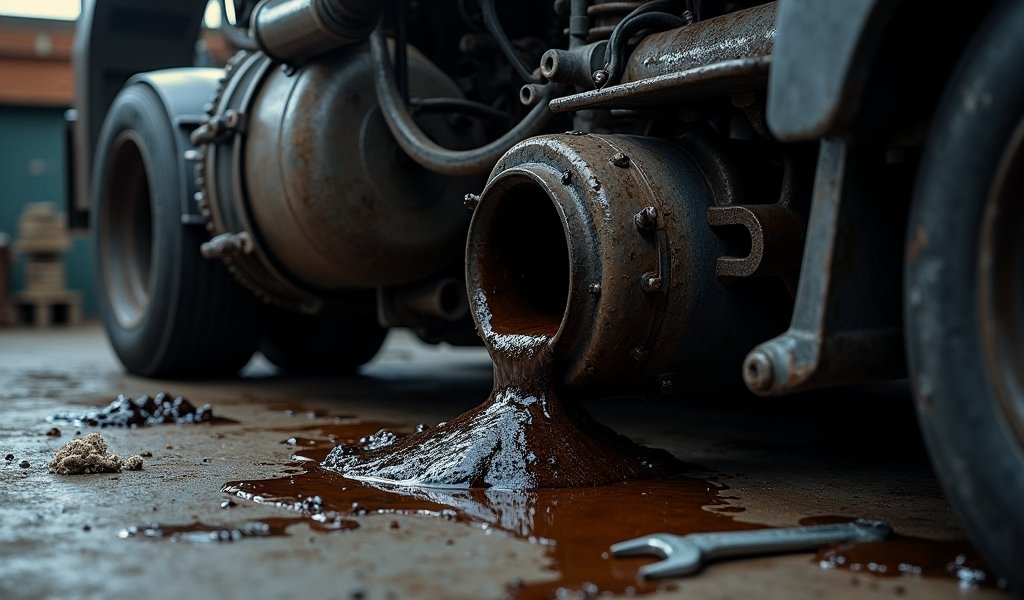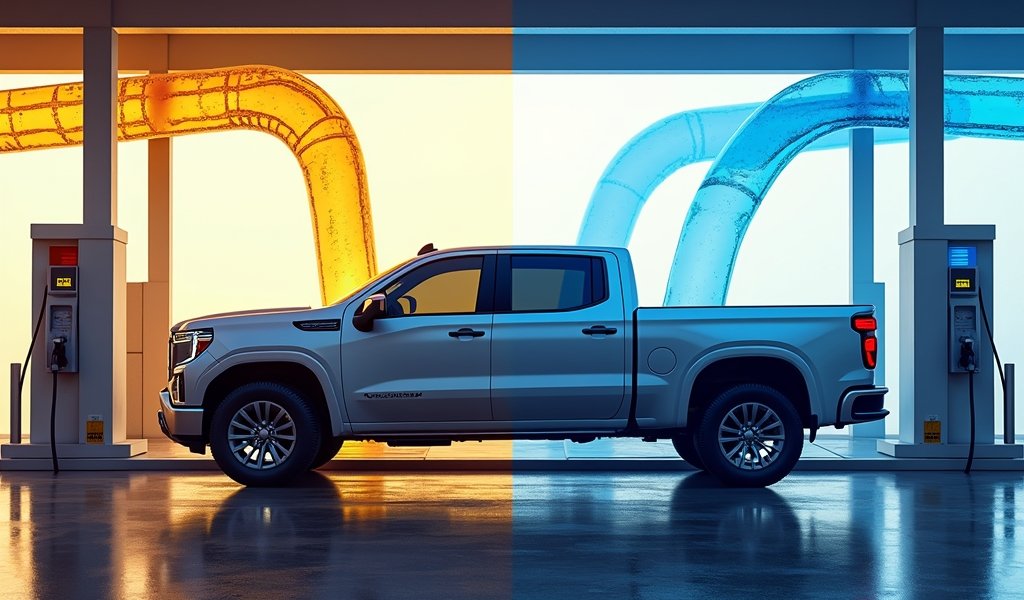Overview
This guide explores the importance of properly combining diesel fuel additives for vehicle performance and longevity, covering compatibility strategies, seasonal treatment approaches, and real-world applications. It explains how modern diesel engines benefit from specific additive types (anti-gel agents, cetane boosters, fuel stabilizers) when used correctly, while providing practical techniques like the dilution method to avoid harmful chemical reactions that could damage fuel systems.
Table of Contents
- Why Diesel Additives Aren’t Just Optional Extras
- The Essential Guide to Diesel Additive Types
- When Good Additives Go Bad: Understanding Compatibility Challenges
- Smart Mixing Strategies That Actually Work
- Tried and Tested: Additive Combinations That Play Nice Together
- Seasonal Additive Strategies for Year-Round Protection
- Lessons From the Shop Floor: Real-World Experiences
- Conclusion
- Frequently Asked Questions
Why Diesel Additives Aren’t Just Optional Extras
Let me tell you something I’ve learned after 20 years under the hood—modern diesel isn’t your grandfather’s fuel anymore. With today’s ultra-low sulfur diesel and various biodiesel blends, these fuels need a little help to perform their best, making diesel fuel additive compatibility more important than ever.
Back when I first started wrenching on diesel engines, you could get by without additives. Not anymore. Today’s precision diesel engines have tolerances finer than a human hair and injection pressures that would cut through steel. They’re incredible machines, but they’re also finicky about what you feed them.
Common issues I see rolling into my shop daily include:
- Fuel gelling up like strawberry jam when temperatures drop below freezing
- Water contamination turning fuel tanks into science experiments growing diesel bug
- Injectors clogging faster than a kitchen sink in a college apartment
- Poor lubricity wearing out expensive injection pumps prematurely
- Reduced cetane levels causing hard starts and the infamous diesel “knock”
The right additives aren’t just snake oil—they’re more like medicine for your engine. Think of them as essential supplements in a world where fuel quality varies wildly from pump to pump. I’ve seen the right additive turn a rough-running, smoke-belching diesel into a smooth operator overnight.
And with diesel engines becoming more sophisticated, particularly those equipped with selective catalytic reduction systems, proper fuel treatment isn’t just about performance—it’s about preventing expensive repairs down the road.
The Essential Guide to Diesel Additive Types

Before we dive into mixing these chemical cocktails, let’s break down what each type actually does. Understanding these differences is your first step toward diesel fuel additive compatibility success.
Anti-gel/Cold Flow Improvers
When the mercury drops, diesel fuel starts to form wax crystals that can clog filters faster than a toddler with a toilet roll. Anti-gel additives modify these wax crystals, keeping them microscopically small and preventing them from clustering together. I’ve pulled apart enough frozen fuel systems in January to know these additives are worth their weight in gold if you live anywhere that sees frost.
Cetane Boosters
Think of cetane as diesel’s octane equivalent—it measures how easily fuel ignites under compression. Higher cetane means quicker, cleaner combustion. I’ve seen proper cetane boosters transform a hard-starting, rough-idling truck into a machine that fires up like it’s mid-summer even during a frigid Montana morning.
Fuel Stabilizers
Diesel fuel has a shelf life. Over time, it oxidizes and forms gums and varnishes that will make your Saturday a repair nightmare. Stabilizers act like preservatives, extending fuel life from months to years. Essential for seasonal equipment or that project truck that sits more than it runs.
Water Dispersants/Emulsifiers
Water is diesel’s arch-nemesis. It promotes microbial growth and corrodes metal components faster than salt on an icy road. Quality dispersants don’t just “hide” water—they encapsulate it so it can pass harmlessly through the combustion process rather than settling in your tank or diesel fuel filter water separator.
Injector Cleaners
Modern high-pressure common rail injectors have spray holes smaller than a human hair. Even microscopic deposits can disrupt spray patterns, killing performance and economy. Good cleaners dissolve these carbon deposits without harming sensitive components. I’ve seen fuel economy improve by 2-3 MPG after a proper injector cleaning regimen.
Lubricity Enhancers
When they removed sulfur from diesel, they also stripped away much of its natural lubricating properties. Lubricity additives coat metal surfaces with a protective film that prevents premature wear. Your injection pump, which can cost thousands to replace, will thank you.
Biocides
If you’ve ever seen the slimy black goop that can form in a neglected diesel tank, you’ve met the infamous “diesel bug”—a cocktail of bacteria and fungi that thrive at the diesel-water interface. Biocides are the nuclear option that kills these organisms before they clog filters and corrode tanks.
When Good Additives Go Bad: Understanding Compatibility Challenges
Here’s where many shade-tree mechanics go wrong—treating additives like they’re all compatible. In my shop, I’ve seen the aftermath of improper mixing, and it’s not pretty. The wrong combinations can create chemical reactions that range from merely ineffective to downright dangerous for your engine.
The chemistry at work here isn’t simple. Additives contain complex compounds designed to modify fuel properties in specific ways. When these compounds meet, they can:
- Neutralize each other, wasting your money on ineffective treatments
- Form gel-like substances that clog filters and injectors
- Create precipitates that settle in tanks and fuel lines
- Compete for binding sites on diesel molecules, reducing effectiveness
- Alter the chemical balance of your fuel in unpredictable ways
I once had a customer who mixed a heavy-duty biocide with an alcohol-based water remover. The resulting chemical reaction created a thick, jelly-like substance that required draining his entire fuel system. A $2,000 lesson in diesel fuel additive compatibility that could have been avoided with a little knowledge.
Manufacturers’ warnings against mixing aren’t just legal CYA—they’re based on real chemistry. As EPA regulations on diesel fuel have tightened over the years, additive formulations have become more complex and potentially reactive when combined improperly.
Smart Mixing Strategies That Actually Work
Despite the challenges, there are proven methods to combine diesel additives safely. After decades of testing and real-world experience, I’ve developed these reliable approaches for my customers.
The Dilution Method
The safest technique I recommend is the dilution method:
- Start with a nearly empty tank (1/8 or less)
- Add your first additive
- Fill to at least half tank with fresh diesel
- Add your second additive
- Top off with more fuel
This creates a “buffer zone” of pure fuel between additives, minimizing direct interaction. I’ve used this method successfully with even the most finicky additive combinations. Think of it as introducing your additives to each other gradually at a dinner party rather than forcing them into a small elevator together.
Sequential Treatment
Another approach that works beautifully is staggering your treatments:
- Use one additive type for an entire tank of fuel
- Let your engine consume most of that treated fuel
- Add a different additive type with your next fill-up
This approach virtually eliminates compatibility concerns by ensuring one additive has done its job and mostly passed through your system before introducing another. It’s particularly effective with cleaning agents and biocides that need time to work properly.
Ingredient Analysis
For the technically minded, examining ingredient lists can reveal potential conflicts:
- Alcohol-based products often clash with polymer-based additives
- Petroleum-distillate carriers usually play well together
- Polyether amine (PEA) cleaners generally mix safely with most other additives
- Nitrate-based cetane improvers may react with certain water dispersants
When manufacturers list active ingredients (many now do), you can make educated decisions about compatibility. This approach requires some chemistry knowledge, but it’s worth the effort for those running specialized equipment or particularly sensitive modern diesel engines.
All-in-One Priority
The simplest solution is often the best—quality multi-function additives eliminate compatibility concerns entirely. Many premium products now combine multiple functions in formulations specifically designed to work together harmoniously. I always recommend starting with a good all-in-one before adding specialized products for specific issues.
While these products may cost more upfront, they’re often more economical than buying multiple single-purpose additives. Plus, their formulators have already solved the compatibility puzzle for you, ensuring the diesel exhaust fluid quality and emissions system integrity are maintained.
Tried and Tested: Additive Combinations That Play Nice Together

Through years of testing in my shop and monitoring customer results, I’ve identified several additive combinations that consistently work well together. These are my go-to recommendations for diesel owners looking to address multiple fuel issues simultaneously.
Anti-gel + Cetane Boosters
This dynamic duo is the winter warrior’s best friend. The chemical compounds in most anti-gel products (typically polymers) don’t interfere with cetane improvers (usually alkyl nitrates). Together, they ensure your diesel flows freely in cold weather and ignites promptly when you hit the starter.
I recommend this combination for any diesel vehicle operating in temperatures below 20°F (-7°C). The improved cold-start performance is remarkable—I’ve seen trucks that wouldn’t start at 0°F fire up within seconds after proper treatment.
Lubricity Enhancers + Injector Cleaners
This pairing addresses two of the most common issues with modern ultra-low sulfur diesel. The lubricity components (often fatty acid compounds) typically don’t react negatively with the detergents in quality injector cleaners.
This combination has saved countless injection pumps and injectors in my customers’ vehicles. Modern high-pressure common rail systems are particularly vulnerable to both lubricity issues and injector deposits, making this a smart preventative maintenance approach for almost any diesel.
Fuel Stabilizer + Anti-gel
For seasonal equipment storage in cold climates, this combination ensures both long-term stability and protection against gelling. Farmers and construction companies who store equipment over winter swear by this combination.
The antioxidants in stabilizers work at the molecular level to prevent fuel degradation, while the anti-gel components remain suspended, ready to prevent waxing when temperatures drop. I’ve had customers successfully start equipment after a year of storage using this combination.
DIY Compatibility Testing
If you’re unsure about a specific combination, I always recommend a simple jar test:
- Mix small amounts of both additives with diesel in a glass jar at the proper ratios
- Shake gently and let sit for 24 hours at room temperature
- Look for separation, cloudiness, precipitates, or gel formation
This test has saved many of my customers from expensive mistakes. If the mixture in your jar looks abnormal after 24 hours, imagine what it might do in your fuel system! According to research from SAE International, even minor incompatibilities can reduce additive effectiveness by up to 40%.
Seasonal Additive Strategies for Year-Round Protection
Just as you wouldn’t wear a winter coat in July, your diesel needs different additive protection depending on the season. After years of experience with vehicles operating in everything from Arizona summers to Alaska winters, I’ve developed these seasonal recommendations.
Winter Protection (Below 32°F/0°C)
When Jack Frost comes knocking, your diesel needs:
- Anti-gel/cold flow improver (added BEFORE temperatures drop)
- Cetane booster (improves cold starting reliability)
- Water dispersant (prevents ice formation in fuel lines)
The key with winter additives is timing—add anti-gel before the cold arrives. These products prevent wax crystal formation but can’t dissolve crystals that have already formed. That’s like trying to unfreeze ice with antifreeze—it just doesn’t work that way.
Summer Performance (Above 70°F/21°C)
Hot weather brings different challenges:
- Injector cleaners (heat accelerates deposit formation)
- Cetane improvers (for better combustion and reduced heat stress)
- Lubricity enhancers (heat increases friction wear)
Summer is ideal for cleaning regimens since warmer fuel temperatures help cleaners work more effectively. I’ve noticed significantly better results from injector cleaning treatments applied during warm months compared to cold-weather applications.
Spring/Fall Transition Periods
These temperature swing seasons demand:
- Water dispersants (temperature changes increase condensation)
- Biocides (bacterial growth accelerates in fluctuating temperatures)
- All-in-one additives (to cover multiple bases during unpredictable weather)
Transition seasons are particularly risky for water contamination as daily temperature swings cause condensation inside fuel tanks. This is when I see the most “diesel bug” problems in my shop, making preventative treatment especially important.
Storage Preparation
For equipment being stored more than 30 days:
- Fuel stabilizer (prevents oxidation during storage)
- Biocide treatment (prevents microbial growth while sitting)
- Fill the tank 95% full (minimizes condensation space)
The full tank recommendation surprises some people, but it works—less air space means less opportunity for moisture to condense on tank walls. I’ve recovered equipment after years of storage using this method, with fuel still in usable condition.
Lessons From the Shop Floor: Real-World Experiences
Book knowledge is valuable, but nothing teaches like experience. These are real situations from my decades in diesel repair that illustrate the importance of proper diesel fuel additive compatibility.
The $4,500 Mistake
A construction company brought me a fleet truck that wouldn’t run after their well-intentioned maintenance manager decided to “super treat” the fuel. He added a biocide, water remover, two different injector cleaners, and a cetane booster all at once to a half-empty tank.
The result? A thick, gel-like substance that clogged every filter, line, and injector in the system. The cleanup required dropping the tank, replacing the entire fuel system, and countless labor hours. Total bill: over $4,500.
The lesson: More is not better with diesel additives. Proper dilution and compatibility are essential.
The Long-Haul Success Story
Contrast that with one of my long-haul trucker clients who logs over 150,000 miles annually. His methodical approach includes:
- A quality lubricity enhancer with every fill-up (non-negotiable base treatment)
- Cetane booster every third tank (for efficiency and power)
- Injector cleaner quarterly (preventative maintenance)
- Seasonal anti-gel in winter months only
By spacing treatments and following the dilution method, he’s maintained the original injectors for over 800,000 miles—unheard of in the days before strategic additive use. His fuel economy consistently beats fleet averages by 5-7%, more than paying for the additives.
The Seasonal Equipment Revival
A landscaping company I work with had been replacing fuel system components on their mowers and tractors every spring until we implemented a proper storage protocol. Now they:
- Add stabilizer and biocide to full tanks before storage
- Run the equipment for 15 minutes to circulate treated fuel
- Add anti-gel if storage temperatures will drop below freezing
Since adopting this regimen, they haven’t replaced a single fuel system component due to storage issues, saving thousands in unnecessary repairs and downtime during their busy season.
Conclusion
Navigating the complex world of diesel fuel additive compatibility doesn’t require a chemistry degree—just some practical knowledge and systematic approach. The strategies I’ve shared come from decades of hands-on experience with everything from pickup trucks to commercial fleet vehicles.
Remember these key takeaways:
- Modern diesel engines benefit significantly from quality additives
- Proper dilution is your best defense against compatibility issues
- Seasonal needs should drive your additive strategy
- When in doubt, test combinations before adding to your tank
- Quality all-in-one products often provide the best value and compatibility
By treating your diesel fuel with the same care you give the rest of your vehicle, you’ll enjoy better performance, improved reliability, and longer engine life. That’s not just good for your wallet—it’s good for your peace of mind knowing your diesel will perform when you need it most.
And isn’t that what we all want from our vehicles? Reliability, efficiency, and the confidence that comes from knowing you’ve done everything right to protect your investment. With these diesel fuel additive compatibility strategies, you’ll be well on your way to achieving exactly that.
Frequently Asked Questions
Can I mix different brands of diesel additives?
You can mix different brands if they serve different functions and you follow the dilution method. Always add one product, fill with fuel, then add the second to prevent direct interaction.
Will using multiple additives void my engine warranty?
Using additives as directed generally won’t void warranties, but improper mixing causing damage might not be covered. Stick with recommended products and keep receipts as proof of proper maintenance.
How often should I use diesel additives?
Lubricity enhancers benefit from every-fill use, while cleaners are typically effective every 3-6 months. Always follow product-specific recommendations and adjust based on your operating conditions.
Can diesel additives fix existing problems or only prevent them?
Most additives work better as preventatives, though some cleaners and water dispersants can address minor existing issues. Severe problems like advanced microbial contamination or heavy gelling usually require mechanical intervention.
Do premium diesel fuels make additives unnecessary?
Premium diesel contains some additives but rarely in sufficient concentration for extreme conditions. Even with premium fuel, additional cold-weather protection and occasional cleaning treatments are beneficial.

